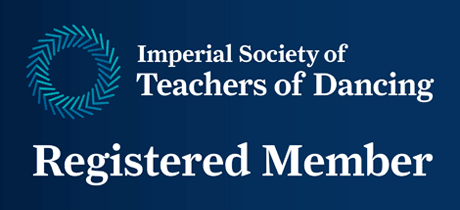DancePro Academy brings the love of dance and performing arts to all its students – click to find a class for you

Criteria for Pointe Work
I am often asked “when can I get pointe shoes” and there is no short answer. I feel it is my responsibility to think about the safety of the students’ growth. It is also physically demanding and painful and going on pointe too early could put someone off ballet completely!
Students must be able to obtain and understand these criteria before going on to pointe. This is for their safety, and it would be irresponsible of me to allow anyone to go on to pointe prematurely as it could cause prolonging injuries.
It is strongly advised that pointe classes are attended before stepping on to pointe. Exercises will focus on the muscles needed to support the dancers’ weight through their feet. All students would need a TheraBand to attend class.
The student must be at least 12 years old.
The bones of the feet do not fully develop and harden until approximately 13-15 years old. A dancer must be strong enough to protect the bones before they are fully developed. It is important to remember everybody develops at a different time. Beginning pointe too early can permanently damage immature bones.
The student must have at least 3 years of consistent training in ballet.
Dancers must know how to sew and tie their ribbons correctly.
The ribbons on a shoe are not decretive, they are to support their ankles and prevent misalignment. The front of the ankle pushes against them so there must be resistance, snug to the foot and not gaping.
The student must be in good health and able to take a whole class.
If the student frequently needs to rest because of illness or injury, or her attendance is poor, she will not be strong enough for the extra demands that pointe work requires.
Be able to maintain a strong, straight trunk while dancing without any tilt in the pelvis.
A straight trunk is held by both the back muscles but more importantly by the lower abdominals. A weak trunk will throw the student off balance while en pointe and will make it difficult to do ballet steps. This also puts the dancer at risk for injury.
Be able to perform a correct demi-plie position for all transitions.
Demi-plie should be performed with turnout from the hips while maintaining the kneecap in line with the 2nd toe, and without allowing the heels to pop up. This should occur in pirouette preparation, jump preparation, and prior to en pointe positions.
Be able to hold correct turnout while dancing from foot flat to demi-pointe.
Correct turnout is achieved from the hips and not from the feet and knees. In the turned-out position, the foot is in line with the kneecap and hip joint.
Correct turnout should be easily maintained in demi-pointe. Weight centred forward over the big toe, heels forward to avoid sickling, and knees straight. Maintaining this correct turnout is more difficult en pointe.
Pointing of feet: the dancer should be able to fully pointe her foot in all steps, without being reminded and without “sickling” (Keep the heels forward toward the big toe).
Using floor pressure to pointe strengthens muscles in her feet and ankles. The most stable position for pointe work is to have the weight slightly forward over the big toe. If the weight is over the little toe, it will increase the chances of strain and injury. If the student is not in the habit of using these foot muscles, then they will not be able to support their body weight on pointe.
Posé onto with straight leg.
Student should have enough strength to push themselves onto half-pointe. This step is harder to do en pointe and a bent leg is usually a sign of weakness or improper step preparation.
Be able to do 32 relevés in the centre without stopping or ankles wiggling.
Strength for pointe work is achieved by repetitive exercises. Relevés are excellent for building up calf muscle strength, which is vital for pointe work. This exercise is more difficult to do en pointe because of the extra height, so strong relevés on demi-pointe is a good sign of strength. The student must also go up as high on demi-pointe as she can, preparing her calf muscles adequately for pointe work.
Be able to hold a relevé passé balance on demi-pointe.
The student should be well-placed (hips square, back straight, legs turned-out), and have the strength to balance on demi-pointe. This pose is more difficult to correct en pointe, as the surface area for balancing is smaller and the strength requirements are greater.
I hope this has helped drive determination to achieve getting pointe shoes and not deterred anyone. Pointe work is a lot more effort that in looks but it really is worth it.


